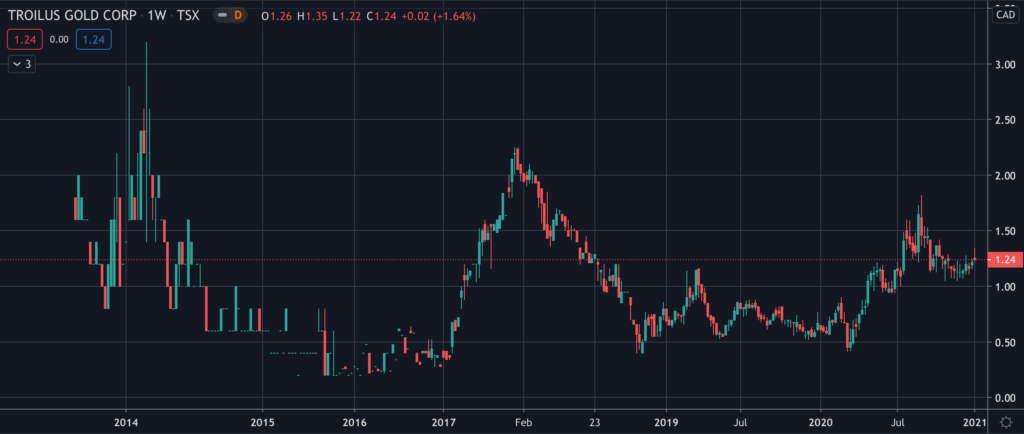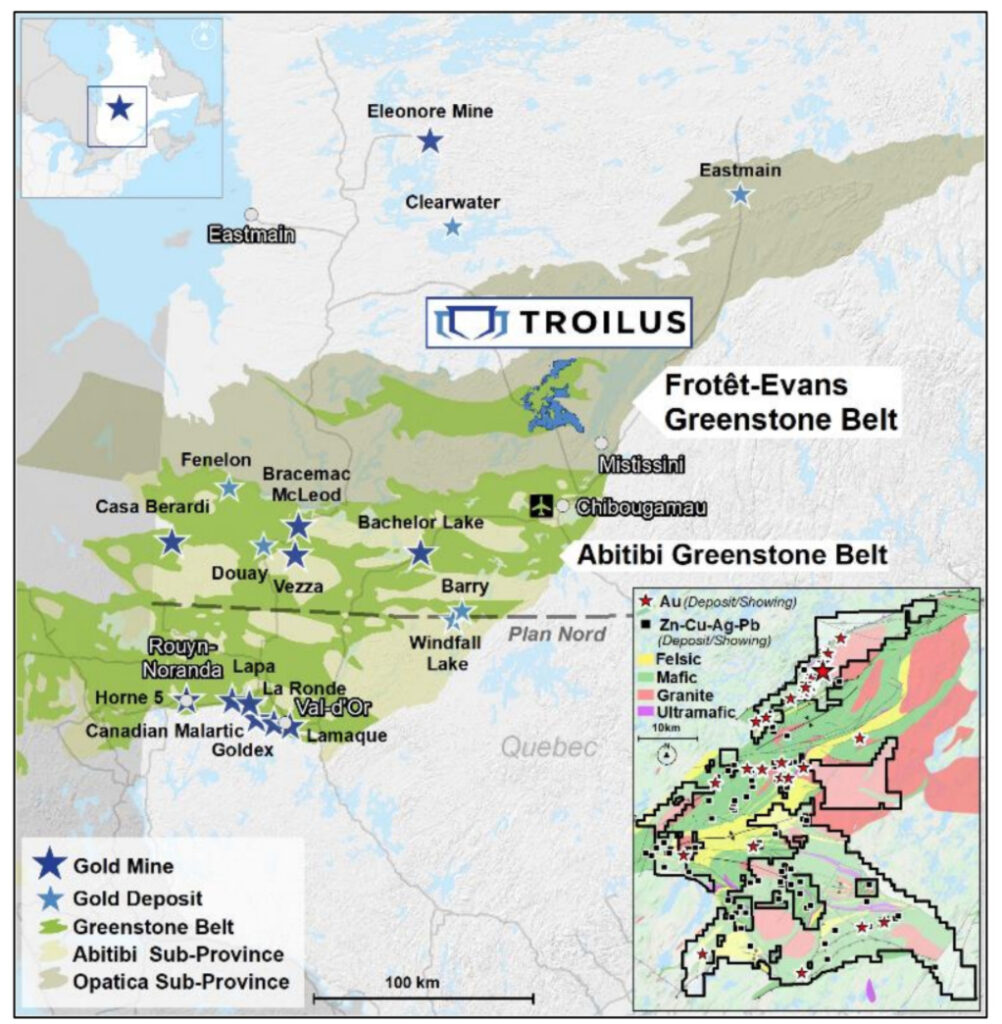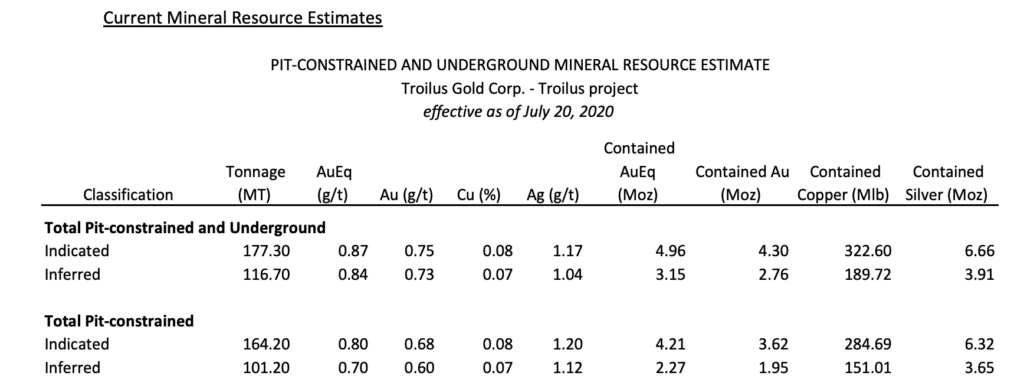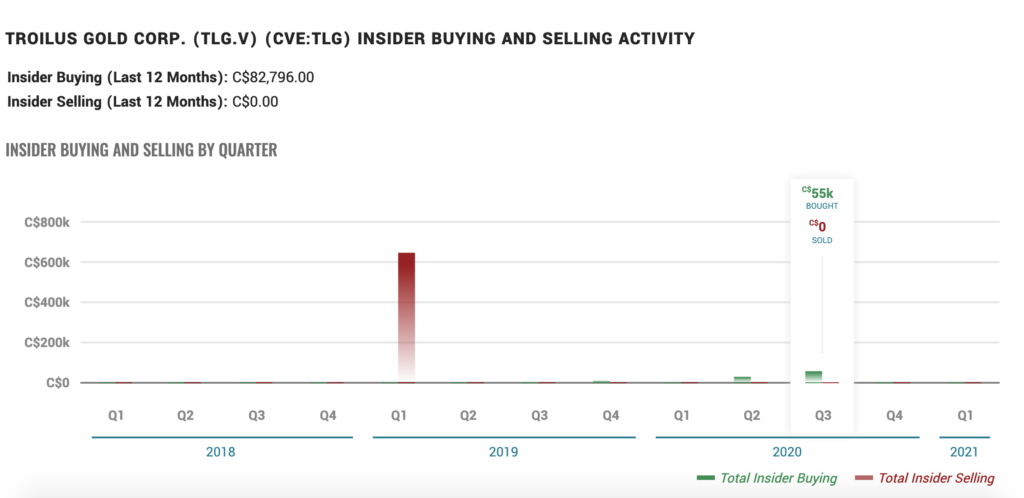Common Stock: Troilus Gold (TSX:TLG)
Current Market Price: $ 1.24 CAD
Market Capitalization: $ 161.6 million CAD
**Note: All values in this article are expressed in Canadian Dollars (CAD) unless otherwise noted.

Troilus Gold Stock – Summary of the Company
Troilus Gold is a precious metals exploration company focused on the acquisition, exploration, development, and operation of precious metals properties. Their primary focus is the Troilus gold property located in Quebec, Canada. This property previously hosted an operating mine which produced 2 million ounces of gold until it was closed down in 2010. Troilus Gold was founded in 1985 and is headquartered in Toronto, Canada.
Revenue and Cost Analysis
Troilus Gold does not have any properties that are currently producing and therefore does not have any revenue. The company consistently runs a net loss and is likely to continue to do to for the foreseeable future.
For the fiscal year end July, 2020 the company had a net loss of $ 18.4 million, a slight decrease compared to a loss of $19.6 million in the previous year. Their largest expenses were exploration related, which totaled $13 million and $ 16.6 million in 2020 and 2019 respectively.

Troilus Gold – Royalty and Streaming Agreements
Certain claims on the Troilus Gold property are subject to net smelter royalties ranging from 1% to 2.5%.
Troilus Gold – Mineral Resources
The Troilus property has indicated and inferred resources totaling 4.96 million ounces of gold, 6.66 million ounces of silver, and 322.6 million pounds of copper.

Balance Sheet Analysis
Troilus Gold has a solid balance sheet. They have a high potential asset in the Troilus gold property, manageable liability levels, and high liquidity. However it is worth noting they will need to raise additional capital to continue to advance the project.
Troilus Gold – Debt Analysis
As of the fiscal year end July 2020 the company does not have any debt outstanding.
Troilus Gold Stock – Share Dynamics and Capital Structure
As of January 2021 the company has 130.3 million common shares outstanding. In addition they have 250 thousand options, 12 million warrants, and 11 million RSU’s outstanding. Fully diluted shares outstanding is around 153.6 million shares.
Troilus Gold has a dilutive capital structure. Investors should consider the effects of dilution before investing.
Troilus Gold Stock – Dividends
The company does not currently pay a dividend and is unlikely to do so for the foreseeable future.
Management – Skin in the game
Insiders at Troilus Gold have been net buyers of the company’s stock in the recent past. However the amounts have been too small to provide any signal to investors in my opinion.

Troilus Gold Stock – 3 Metrics to Consider
Debt to Equity Ratio
Total Liabilities/Total Share Holder Equity
$ 7.6 million / $ 32.3 million = .24
A debt to equity ratio of .24 indicates that Troilus Gold uses a mix of debt and equity in its capital structure, but relies mostly on equity financing to fund itself.
Working Capital Ratio
Current Assets/Current Liabilities
$ 32.6 million / $ 3.1 million = 10.6
A working capital ratio of 10.6 indicates a strong liquidity position. Troilus Gold should not have problems meeting its near term obligations.
Price to Book Ratio
Current Share Price/Book Value per Share.
$ 1.24/ $ 0.25 = 5
Based on fully diluted shares outstanding Troilus Gold has a book value per share of $ 0.25. At the current market price this implies a price to book ratio of 5, meaning the company’s stock currently trades at a premium to the book value of the company.
Gold Market – Economic Factors and Competitive Landscape
Gold mining is a highly competitive, capital intensive business. The company will need to compete fiercely for both new projects and capital. However, given the current economic environment of global money printing and zero or negative interest rates, it would appear gold companies are poised to benefit from a strong economic tailwind.
Troilus Gold Stock – Summary and Conclusions
Troilus Gold stock is an interesting investment opportunity. The company owns a property in one of the world’s premier mining regions in Quebec. This property hosted a mine which produced significant amounts of gold and copper in the past, and their current resources estimate is large. They own a large land package, which they continued to expand in 2020, purchasing adjacent claims from O3 Mining.
The company is sound financially with manageable liabilities and a strong liquidity position. My major concerns are the potential for further dilution and the price to book premium, however I don’t view either of these as excessive relative to the industry.
My only unanswered question before I am willing to invest in Troilus Gold stock is why was the mine on their property previously shut down? This will require further research on my part, but should I find a satisfactory answer and conclude that their resource estimate is in fact viable, I will seriously consider taking a position in Troilus Gold Stock.
Disclaimer
This is not investment advice. Nothing in this analysis should be construed as a recommendation to buy, sell, or otherwise take action related to the security discussed. If I own a position in the security discussed, I will clearly state it.
This is not intended to be a comprehensive analysis and you should not make an investment decision based solely on the information in this analysis. I hope this serves as a useful starting point for a more comprehensive analysis, and hopefully draws attention to aspects of the company that were overlooked or merit further investigation. This is by no means intended to be a complete analysis. Again, this is not investment advice, do your own research.